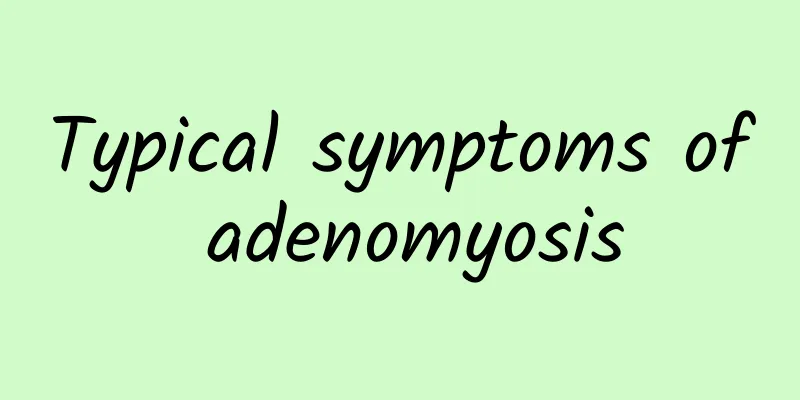Typical symptoms of adenomyosis

|
Typical symptoms of adenomyosis include progressively worsening dysmenorrhea, increased menstrual flow, and long-term abdominal pain. If these symptoms occur, it is recommended to seek medical attention as soon as possible and obtain a clear diagnosis through B-ultrasound or MRI. Adenomyosis is a chronic disease caused by the invasion of endometrial glands and stroma into the myometrium, and is common in women aged 30-50. Dysmenorrhea is the most significant manifestation, usually secondary dysmenorrhea that is difficult to relieve, and the pain gradually worsens as the disease progresses, and may spread to the lower back. Increased menstrual flow is often accompanied by prolonged menstruation, and some patients may also experience irregular bleeding before and after menstruation. Some patients may continue to feel bloating or pain in the lower abdomen, especially after sexual intercourse. If the course of the disease is long, it may also cause anemia, fatigue and other systemic discomfort symptoms, affecting the quality of life. To relieve these symptoms, drug therapy is a common method, such as oral short-acting contraceptives to relieve dysmenorrhea, GnRH agonists to effectively inhibit endometrial growth, and levonorgestrel intrauterine sustained-releasing system (Mirena) to relieve dysmenorrhea and heavy menstrual flow. For patients with severe symptoms or ineffective medication, surgery can be considered, such as uterine artery embolization, uterine-preserving lesion resection, and complete uterine removal. Regardless of which method is chosen, the most suitable treatment plan for the condition must be selected under the guidance of a doctor. To prevent symptoms from getting worse, patients should pay attention to a balanced diet, avoid high-fat diets, and appropriately increase iron-rich foods such as lean meat and spinach to cope with anemia caused by menorrhagia. Moderate participation in gentle exercise such as yoga or walking can help relieve dysmenorrhea and improve mood. If symptoms change significantly, patients should be reviewed in a timely manner, and the disease should be monitored regularly to ensure timely treatment. |
<<: Irregular menstruation caused by endometritis
>>: What medicine cures endometriosis?
Recommend
What to do if you have a headache after miscarriage? There are 6 ways
If you have a headache after miscarriage, you mus...
Is there any good treatment for adenomyosis ovarian cysts?
Adenomyosis and ovarian cysts can be treated with...
Dietary considerations for irregular menstruation
Irregular menstruation is one of the most common ...
Pelvic inflammatory disease can present different changes in acute and chronic
Pelvic inflammatory disease can present different...
What are the causes and hazards of cervical erosion?
Cervical erosion is a common gynecological phenom...
What are the symptoms of uterine fibroids? Who are the high-risk groups for uterine fibroids?
Although uterine fibroids are a common gynecologi...
What are the symptoms of vulvar leukoplakia
According to medical evidence, the incidence of v...
Mid-Autumn Festival: Enjoy the nutritious and healthy domestic fish
The Mid-Autumn Festival is approaching, and the p...
Is immunotherapy necessary for abortion?
When visiting the clinic, you can see that many d...
How to perform superconducting visual painless abortion
How to perform superconducting visual painless ab...
What is pelvic inflammatory disease in traditional Chinese medicine? Which acupoints can be massaged to treat pelvic inflammatory disease?
What is pelvic inflammatory disease in traditiona...
Experts explain the symptoms of uterine fibroids
What are the symptoms of uterine fibroids? Uterin...
How to treat uterine fibroids How to choose the treatment method for uterine fibroids
The treatment of uterine fibroids needs to be car...
What causes cervical warts
Cervical warts are a common sexually transmitted ...
What causes frequent cervicitis in women? Women must know the three major causes of cervicitis
Cervicitis is a common gynecological inflammation...









